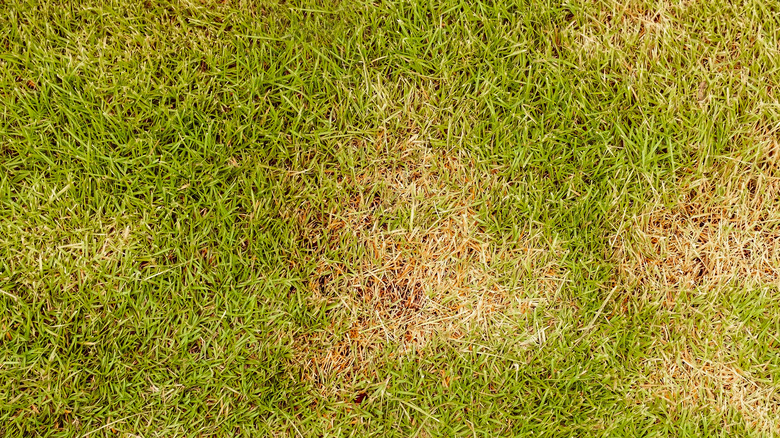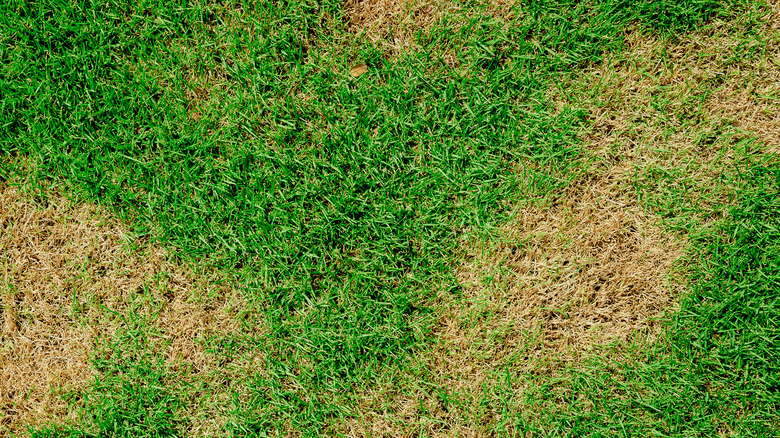Here's Why Your Lawn Looks Rusty Orange, Not Green
A lawn that isn't lush or green is rarely in healthy shape. For grass that suddenly appears as rusty as grandma's long-lost cast iron, the diagnosis is most likely a fungal disease called "lawn rust."
Also dubbed grass rust or rust fungus, these infectious spores initially appear as yellow spots. The spots may not be noticeable at first, but they'll grow bigger until they burst, resulting in an orange and red dust that coats the blade. This dust easily transfers from one source to another when touched, so you'll know the disease is present when you bend down to wipe the grass blade and come back up with discolored fingers.
Grass rust is most rampant in late summer and early fall when outside conditions are warm, humid, shaded, and wet. The latter can be a result of standing water in your lawn or even overnight dew that's slow to dry out. Windy days will help spread the spores, as will the gait of humans or pets. The good news is, rust fungus is not harmful to people or animals.
Side effects of lawn rust
The most obvious side effect of this fungal infection is seeing orange when you'd rather be seeing green. An annoyance, for sure, and the feeling is only exacerbated when the dust finds its way inside your home with the help of pants legs or fluffy pups. The ramifications of lawn rust extend beyond a state of being, though.
In the most minor of cases, rust will slow the growth rate of whichever patch of grass it infects. The more spores that coat the grass, the slower this process becomes until the grass stops growing altogether and begins to die. The reason for this lies in that magical process learned across elementary classrooms: photosynthesis. Rust prevents the blade from absorbing sunlight, the critical first step in photosynthesis. You miss that, and the grass will not produce the food it needs to survive and thrive. A lawn that's not growing or has poor overall health is more susceptible to additional issues. Pests will begin to invade, or the grass will be weakened enough to become host to other outdoor diseases.
Ridding your lawn of rust disease
Luckily, there are ways to minimize the effects of rust fungus and even prevent its return and get back to a green lawn. The first step is to watch your watering habits. Remember, rust loves a moist environment. Lawns watered at night take longer to dry out, creating greater opportunity for rust to form. Instead, try watering in the morning or early afternoon. You'll also want to check that your lawn is draining properly and getting the right amount of sunlight.
Mowing is essential to controlling and preventing rust, but there's a right and wrong way to mow the lawn. It's okay to mow frequently, just be sure to keep the blade at a height of at least 3 inches. Grass that's too short won't have enough energy to fight off diseases. Removing deep layers of thatch — those more than a half-inch thick — will also help maintain proper energy in the grass and soil, as will applying fertilizer. It's advised to perform a soil check before spreading fertilizer, though, to ensure optimal pH levels.
While there are fungicides available to help control lawn rust, the use of such products is not always the best solution. Most fungicides only work if applied at the absolute right moment, a time frame that is often missed. You're much better off relying on the organic solutions mentioned above.

